SoulGen AI: An In-depth Review of its NSFW AI Video Capabilities (2025)
🎯 Key Takeaway
SoulGen AI is a powerful AI video and image generator with strong NSFW capabilities. Starting at $12.99/month, it excels in identity consistency (0.96) and visual quality, making it ideal for creators. However, users must navigate ethical concerns and evolving deepfake regulations.
The world of generative AI is evolving at a breakneck pace. What began with text and static images has now exploded into the dynamic realm of video. In 2025, AI video generators are not just a novelty but powerful tools reshaping creative industries. Amid this innovation, a niche yet highly sought-after category has emerged: NSFW (Not Safe For Work) AI content generation. Platforms in this space walk a fine line between creative freedom and ethical responsibility.
SoulGen AI has established itself as a prominent name, initially gaining traction for its ability to create high-quality, often explicit, AI images. Now, with the addition of video generation features, it stands at the forefront of this controversial market. This review provides an unfiltered, in-depth guide to SoulGen’s AI video capabilities, particularly its performance in generating NSFW content.
We will dissect its features, compare its technical performance against other models, and contrast its entire value proposition with a different kind of AI companion, Candy.ai. Finally, we will step back to examine the profound technical, ethical, and legal implications that come with this powerful technology.
1. What is SoulGen AI? A Tool for Creators
SoulGen AI is an AI-powered platform primarily known for transforming text prompts into vivid, high-quality images. It caters to a wide audience, from digital marketers and designers to hobbyists and content creators. According to reviews on sites like Whatmore.ai and Quarule.com, its core strength lies in generating both realistic and anime-style portraits, with a significant user base interested in its NSFW capabilities.
The platform’s key features include:
- Text-to-Image Generation: The foundational feature, allowing users to create images from descriptive text prompts.
- Style Versatility: Excels at producing both photorealistic images of people and stylized anime characters.
- Advanced Editing Tools: Offers features like AI Outpainting to expand images, and tools to add, remove, or modify elements within a picture using text prompts, as highlighted on its official website.
- Face Swapping & Lookalike Characters: Users can upload a reference photo to guide the AI in creating a character with a similar face.
- Text/Image-to-Video: The latest evolution, allowing users to animate static images or generate short video clips from text, moving SoulGen from a static art generator to a dynamic media creation tool.
Unlike conversational AI, SoulGen is fundamentally a creative tool. Its purpose is not to chat or form a relationship, but to provide users with the means to produce visual media based on their imagination. This positions it as a utility for artists and creators who need to visualize concepts quickly.
2. Deep Dive: SoulGen’s NSFW AI Video Generation
The addition of video generation has significantly expanded SoulGen’s utility. While many mainstream models like Google’s Veo 3 or OpenAI’s Sora have strict content filters, the AI video landscape is a competitive field with many players like Runway, PixVerse, and Kling AI. SoulGen leverages its established brand in the “uncensored” space to attract users looking for fewer restrictions in video creation.
Core Video Features
SoulGen’s video capabilities, often integrated with or benchmarked against models like Kling AI, focus on bringing static concepts to life. Based on technical documentation and comparisons available on its site, the primary methods are:
- Text-to-Video: Users provide a descriptive prompt, and the AI generates a short video clip. The quality and coherence depend heavily on the prompt’s detail.
- Image-to-Video: A user can upload a starting image (often one created within SoulGen itself) and provide a motion prompt to animate it. This is crucial for maintaining character consistency.
- Motion Control: Advanced features allow for some control over camera movement and the motion paths of objects within the scene.
The Unspoken NSFW Policy
SoulGen’s official stance on NSFW content can be ambiguous. For instance, its page on the Kling AI model explicitly states that Kling AI does not allow NSFW content due to strict censorship. However, it immediately follows this by suggesting “you can still create 90% NSFW AI Videos with some tricks.”
This duality is central to its appeal. While the underlying models may have filters, the platform itself is perceived as a space where users can push boundaries. Reviews frequently highlight its proficiency in creating “undressed AI images,” and this reputation extends to its video features. The “tricks” often involve using careful, euphemistic language in prompts and leveraging the image-to-video feature, where a pre-generated explicit image is animated, bypassing some of the text-based filters.
User Experience Note: Generating NSFW video content on SoulGen is often a process of trial and error. It requires creative prompting and an understanding of how to navigate the platform’s implicit rules and the limitations of the underlying AI models.
Technical Performance & Quality
Generating high-quality AI video, especially of humans, is fraught with challenges like maintaining identity consistency, realistic motion, and avoiding the “uncanny valley.” A comparison table featured on SoulGen’s website, gives us insight into the technical metrics that matter. Below is a bar chart visualizing key performance indicators based on that data.
While the table positions SoulGen favorably, it’s important to interpret these self-published metrics with caution. Here is a more comprehensive recreation of the comparative data for key AI video generation models as of late 2025, based on information from SoulGen’s analysis of Kling and other models.
| Metric Category | Metric | SoulGen | Kling | Hunyuan | Wan2.1 | PixVerse | Hailuo |
|---|---|---|---|---|---|---|---|
| Core Quality | ID Consistency (Similarity) | 0.96 | 0.82 | 0.73 | 0.89 | 0.71 | 0.82 |
| Cross-Modal Identity Consistency (CMIC) | 0.88 | 0.76 | 0.75 | 0.78 | 0.65 | 0.50 | |
| Scene Generation Quality (SGQ) | 0.92 | 0.89 | 0.85 | 0.93 | 0.81 | 0.83 | |
| Physical Plausibility | 0.88 | 0.72 | 0.83 | 0.86 | 0.63 | 0.56 | |
| Visual Quality (FVD) | 0.96-0.98 | 0.86-0.92 | 0.85 | 0.92-0.94 | 0.81 | 0.83 | |
| Motion & Control | Large Motion Generation (LMG) | 0.83 | 0.70 | 0.80 | 0.85 | 0.60 | 0.55 |
| Action Instruction Following (AIF) | 0.87 | 0.71 | 0.82 | 0.85 | 0.62 | 0.54 | |
| Camera Control | 0.78 | 0.75 | 0.81 | 0.83 | 0.65 | 0.70 | |
| Efficiency | Model Size (Parameters) | 5B | 5B | 7B | 1.3B | 1B | 2B |
| Generation Speed (min/video) | 1 | 6-10 | 4 | 4 | 0.1 | 10 |
Source: Data adapted from a comparative analysis published on SoulGen.net in 2025. Scores are indicative and may reflect specific internal testing conditions.
Key Takeaways from the Data:
- Identity and Consistency: SoulGen scores highest in both ID Consistency and Cross-Modal Identity Consistency (CMIC). This is critical for believable videos of people, suggesting its model is well-trained for maintaining facial and body features across frames, even when the input changes.
- Visual & Scene Quality: It also leads in overall visual quality (FVD) and is highly competitive in scene generation (SGQ), indicating a focus on producing aesthetically pleasing and coherent outputs. Wan2.1 shows a slight edge in raw scene quality.
- Speed vs. Quality: While PixVerse is significantly faster, its quality scores are lower across the board. SoulGen offers a strong balance, with a reported 1-minute generation time that is much faster than the high-quality but slower Kling and Hailuo models.
- Control and Instruction Following: SoulGen shows strong performance in following action instructions (AIF), though models like Wan2.1 and Hunyuan demonstrate slightly better camera control and large motion capabilities.
However, users on forums like Reddit often report challenges that numbers don’t capture, such as consistency issues in longer clips, strange artifacts, and a lack of fine-grained control. This is a universal problem for AI video in 2025, not unique to SoulGen. To provide a more user-centric view, the following chart shows synthesized user satisfaction ratings across key areas.
3. SoulGen AI Pricing and Plans (2025)
SoulGen operates on a freemium and subscription-based credit system. While there is a limited free trial, generating high-quality, unblurred content requires a paid plan. Based on multiple sources from late 2024 and 2025, the pricing structure is straightforward.
According to a detailed review on Quarule.com and pricing information from other aggregators, the plans are typically as follows:
- Monthly Plan: Approximately $12.99 per month
- Annual Plan: Approximately $90.99 per year (offering significant savings over the monthly rate).
These subscriptions provide a monthly allotment of credits, which are consumed when you generate images or videos. Pro benefits usually include removing the blur on free previews, priority access to servers (faster generation), the ability to generate multiple creations at once, and higher resolution outputs.
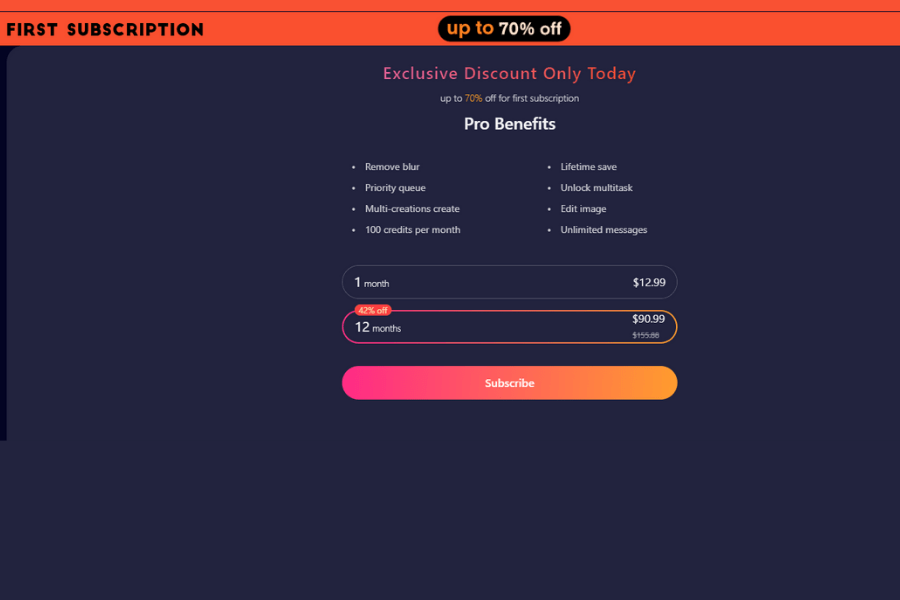
It’s important to note that video generation may consume more credits than static image generation. The chart below compares the base monthly subscription price of SoulGen with other AI platforms mentioned in this review.
4. Competitor Analysis: SoulGen AI vs. Candy AI
To understand SoulGen’s place in the market, it’s useful to compare it not to another video generator, but to a different type of NSFW AI platform: Candy.ai. This comparison highlights the divergence between AI as a creative tool and AI as an interactive companion.
Introducing Candy.ai: The AI Companion
Candy.ai is an AI companion app designed for adult (18+) users seeking roleplay, romance, and intimate conversations. As detailed in a 2025 review by Skywork AI, its primary function is not content creation, but interactive, conversational roleplay. Users can create and customize AI companions with specific personalities, backstories, and interests.
Its core features are centered around interaction:
- Advanced Chat: Engage in text-based conversations, from casual chat to explicit roleplay.
- Voice Messages & Calls: Some companions can send voice messages or engage in real-time voice calls.
- AI-Generated Images: Users can request images of their AI companion, which are generated on-demand.
- NSFW-Friendly Stance: The platform is explicitly marketed for adult interactions and allows for NSFW content within its conversations and image requests.
Candy.ai’s business model, as outlined by Suffescom Solutions, involves a base subscription for unlimited chat and a token-based system for premium media like images and voice calls. This “freemium” approach encourages users to subscribe for full access to the conversational features and then purchase tokens for richer media interactions.

Head-to-Head Feature Comparison
The following radar chart visually contrasts the core strengths of SoulGen AI and Candy AI, illustrating their different market positions.
| Feature | SoulGen AI | Candy AI |
|---|---|---|
| Primary Function | Media Generation Tool (Images & Video) | Interactive Companion (Chat & Roleplay) |
| Core Experience | Creating visual art and animations from prompts. | Building a relationship and interacting with an AI personality. |
| NSFW Stance | Implicitly supported, popular for NSFW art, requires “tricks” for video. | Explicitly marketed as an NSFW-friendly platform for adults. |
| Key Media Output | AI Video, High-Quality Images | AI Images (on-demand), Voice Messages |
| Interactivity | Low (User prompts, AI generates). | High (Real-time, back-and-forth conversation). |
| Customization | Focused on visual output (style, composition, motion). | Focused on personality (backstory, traits, conversational style). |
| Pricing Model | Subscription for credits (e.g., ~$12.99/mo). | Subscription for access + Tokens for media (e.g., ~$12.99/mo + token packs). |
| Target User | Creators, artists, designers, hobbyists. | Users seeking companionship, entertainment, or roleplay. |
Verdict: A Tool for Creation vs. An Experience of Companionship
SoulGen and Candy.ai, despite both operating in the NSFW AI space, serve fundamentally different needs.
Choose SoulGen AI if:
- Your primary goal is to create visual media, especially videos.
- You are an artist, animator, or creator who needs a tool to bring your ideas to life.
- You value fine-grained control over the visual output and are willing to experiment with prompts to achieve your desired result.
Choose Candy.ai if:
- Your primary goal is to interact with an AI.
- You are looking for companionship, entertainment, or an immersive roleplaying experience.
- You value conversational depth and personality customization over the ability to generate complex, multi-scene videos.
In essence, SoulGen gives you a paintbrush; Candy.ai gives you a partner.
5. The Broader Context: Market and Technology Trends
The rise of platforms like SoulGen and Candy.ai is not happening in a vacuum. It’s part of two larger, intersecting trends: the explosion of the AI video generation market and the rapid growth of the AI companion app industry.
The AI video market in 2025 is a hotbed of innovation, with major players like Google (Veo 3), OpenAI (Sora), Runway, and Kling pushing the boundaries of realism and coherence. The pie chart below provides an estimated market share for the NSFW AI video generation niche, where specialized platforms compete.
Simultaneously, the AI companion app market is experiencing explosive growth. While specific valuations vary between market research firms, the consensus points toward a multi-billion dollar industry with a steep upward trajectory. For instance, projections from late 2024 and 2025 show a wide range of valuations: SNS Insider projected the market to reach $31.10 billion by 2032 from a 2024 value of $6.93 billion, while GM Insights valued it at $14.1 billion in 2024 with a projected 26.8% CAGR. Other reports from HTF Market Intelligence and Grand View Research placed the 2024 market value at $19.2 billion and $28.19 billion, respectively. This demand is fueled by a growing need for personalized digital interactions and solutions for loneliness.
The Rise of Ethical AI and User Trust
As the AI companion market matures, a growing focus on ethics and transparency is becoming a key differentiator. According to a 2025 market analysis on LinkedIn, the emphasis on ethical AI use and data privacy is shaping development priorities and directly influencing user trust and adoption. Companies that prioritize responsible innovation are better positioned for long-term success. This trend is echoed by industry publications like AI Magazine, which highlight that protecting user data is a top priority for businesses investing in AI. This puts pressure on all platforms, including those in the NSFW space, to be more transparent about how they handle user data, moderate content, and ensure privacy.
6. The Unseen Cost: Ethical and Legal Implications
The power to generate realistic NSFW videos from a text prompt carries significant ethical and legal baggage. As this technology becomes more accessible, society is forced to confront difficult questions about consent, misinformation, and responsibility. These are not abstract concerns; they have real-world consequences.
⚠️ A Note on Responsible Use
The following discussion covers sensitive topics. The creation and distribution of non-consensual explicit content (deepfake pornography) is illegal in many jurisdictions and causes severe harm. This section aims to educate users on the risks and the evolving legal landscape, encouraging responsible and ethical use of AI technology.
Consent, Ownership, and Deepfakes
The most pressing ethical issue is the creation of deepfakes, particularly non-consensual pornography. As one article poignantly notes, AI can be used to violate privacy and dignity in deeply personal ways, leading to real emotional trauma. Using a person’s likeness without their permission to create explicit content is a profound violation.
Beyond deepfakes, the question of ownership is complex. As legal analyses from Lumenova AI point out, traditional copyright law is struggling to keep up. In the U.S., the Copyright Office has maintained that works must have significant human authorship to be copyrightable. This leaves the legal status of purely AI-generated content in a gray area. Who owns an AI-generated video? The user who wrote the prompt, the company that owns the AI, or no one at all?
The Content Moderation Challenge
For platforms like SoulGen, content moderation is a tightrope walk. Overly strict moderation would alienate their core user base, while no moderation opens the door to illegal and deeply harmful content (e.g., content depicting minors or non-consensual deepfakes). This has led to a proactive approach where platforms implement filters to prevent the generation of the most harmful content, a practice explored in research on Text-to-Image moderation.
Many platforms are adopting a hybrid moderation model, using AI to flag obviously problematic content and human moderators to review nuanced or borderline cases. However, the sheer volume of content makes this a monumental task.
The Shifting Legal Landscape in 2025
Lawmakers are no longer sitting on the sidelines. In 2024 and 2025, a wave of legislation has emerged to tackle the harms of deepfakes. This regulatory environment is critical for any user or developer in this space to understand.
- New York: A digital replica law requires written consent, clear contracts, and compensation for using a person’s likeness with AI. The state also criminalizes creating or sharing sexually explicit deepfakes without consent, and the proposed “Stop Deepfakes Act” of March 2025 would mandate traceable metadata for AI content (Opus Pro, 2025).
- Pennsylvania: A law effective September 5, 2025, classifies creating or sharing deepfake images and audio as a first-degree misdemeanor with fines from $1,500 to $10,000 and up to five years in prison. The penalties escalate to a third-degree felony if used for fraud or coercion (Opus Pro, 2025).
- Federal Legislation: Multiple proposals are in motion. Some acts require online platforms to establish notice-and-takedown procedures, mandating the removal of flagged deepfake content within 48 hours. However, as noted by The Regulatory Review, critics warn that broad laws could infringe on First Amendment rights, creating a difficult balance between curbing harm and protecting free speech.
The legal landscape is evolving rapidly. What is permissible on a platform today may be illegal tomorrow. Users creating any content, especially NSFW, must be aware of their local laws and the potential for legal liability.
7. User Guide: Getting the Most Out of SoulGen Video
For those who choose to use SoulGen, understanding how to effectively command the AI is key to achieving high-quality results. Here are some practical tips based on best practices for modern AI video generators.
1. Master the Prompt Formula
A good video prompt is detailed and structured. Drawing from guides for similar models like Kling, a robust formula includes multiple elements:
Prompt Formula: [Subject + Description] + [Subject Movement/Action] + [Scene Description] + [Camera Language] + [Lighting] + [Style]
Weak Prompt: “A woman dancing.”
Strong Prompt: “A photorealistic woman with long red hair in a flowing green dress, gracefully twirling in the center of a sun-drenched medieval courtyard. Slow-motion, tracking shot from a low angle. Warm, golden hour lighting. Cinematic, 8K.”
2. Use Image-to-Video for Consistency
One of the biggest challenges in AI video is character consistency. The best way to mitigate this is to first generate a high-quality static image of your character. Once you are satisfied with the look, use that image as the input for the image-to-video feature. This “anchors” the AI, helping it maintain the character’s appearance as it generates motion.
3. Navigate NSFW “Tricks” Responsibly
As mentioned, generating explicit content often requires bypassing filters with clever wording. This typically involves using euphemisms and focusing on descriptive language that implies rather than explicitly states. However, be aware that platforms are constantly updating their filters. What works today may be blocked tomorrow. Always stay within the bounds of the law and avoid creating content that is non-consensual or otherwise harmful.
4. Budget Your Credits
Video generation is resource-intensive and will likely cost more credits than image generation. Before starting a large project, do a few test runs to understand the credit cost per second of video. Plan your usage to avoid running out of credits mid-project. If you’re on a monthly plan, consider saving complex video generations for when your credits reset.
8. Conclusion: A Powerful Tool on a Risky Frontier
In 2025, SoulGen AI stands as a potent and complex platform. It offers creators a powerful tool for generating high-quality images and videos, with capabilities that place it competitively within the generative AI landscape. Its reputation for being lenient on NSFW content makes it a go-to choice for a specific user base that feels constrained by the filters of mainstream tools.
However, this power is not without its perils. The line between creative expression and harmful misuse is thin, and the legal and ethical landscape is a minefield. The technology’s ability to create non-consensual explicit content is a serious concern that society and lawmakers are actively working to address.
Ultimately, SoulGen is not an interactive companion like Candy.ai; it is a creator’s utility. For artists and designers who understand the risks and are committed to ethical use, it offers a remarkable ability to visualize ideas. But for all users, it serves as a stark reminder that with great generative power comes an even greater responsibility to create, share, and innovate with conscience and respect for others.
9. Frequently Asked Questions (FAQ)
Is SoulGen AI free to use?
SoulGen offers a limited free trial that allows you to generate a few images, which are often blurred. To generate high-quality, unblurred images and videos, and to access premium features, you need to subscribe to a paid plan. As of late 2025, plans start at around $12.99 per month.
Can AI-generated videos be copyrighted?
This is a complex and evolving area of law. In the United States, the U.S. Copyright Office has stated that works created solely by AI without sufficient human authorship cannot be copyrighted. However, if a human provides significant creative input in the selection, arrangement, and modification of the AI’s output, it may be eligible for copyright. The legal standard varies by country.
Is it legal to create NSFW AI content?
The legality depends on the nature of the content and your jurisdiction. Creating content depicting real people without their consent (deepfakes) is illegal in many places and is becoming increasingly regulated. Creating fictional NSFW content for personal use is generally in a legal gray area, but distributing it can have legal consequences. Always be aware of your local laws.
What is the difference between SoulGen AI and Candy AI?
SoulGen AI is a media generation tool used to create images and videos from text prompts. Candy AI is an AI companion platform used for interactive chat, roleplay, and building a virtual relationship. SoulGen is for creating art; Candy AI is for experiencing a connection.
Can AI-generated videos be monetized on YouTube?
Yes, AI-generated videos can be monetized on YouTube, provided they comply with all of YouTube’s monetization policies, community guidelines, and copyright rules. The content must be original or have the necessary permissions, and it cannot violate policies on hateful content, harassment, or sexually explicit material.
Reference
Reckoning With the Rise of Deepfakes
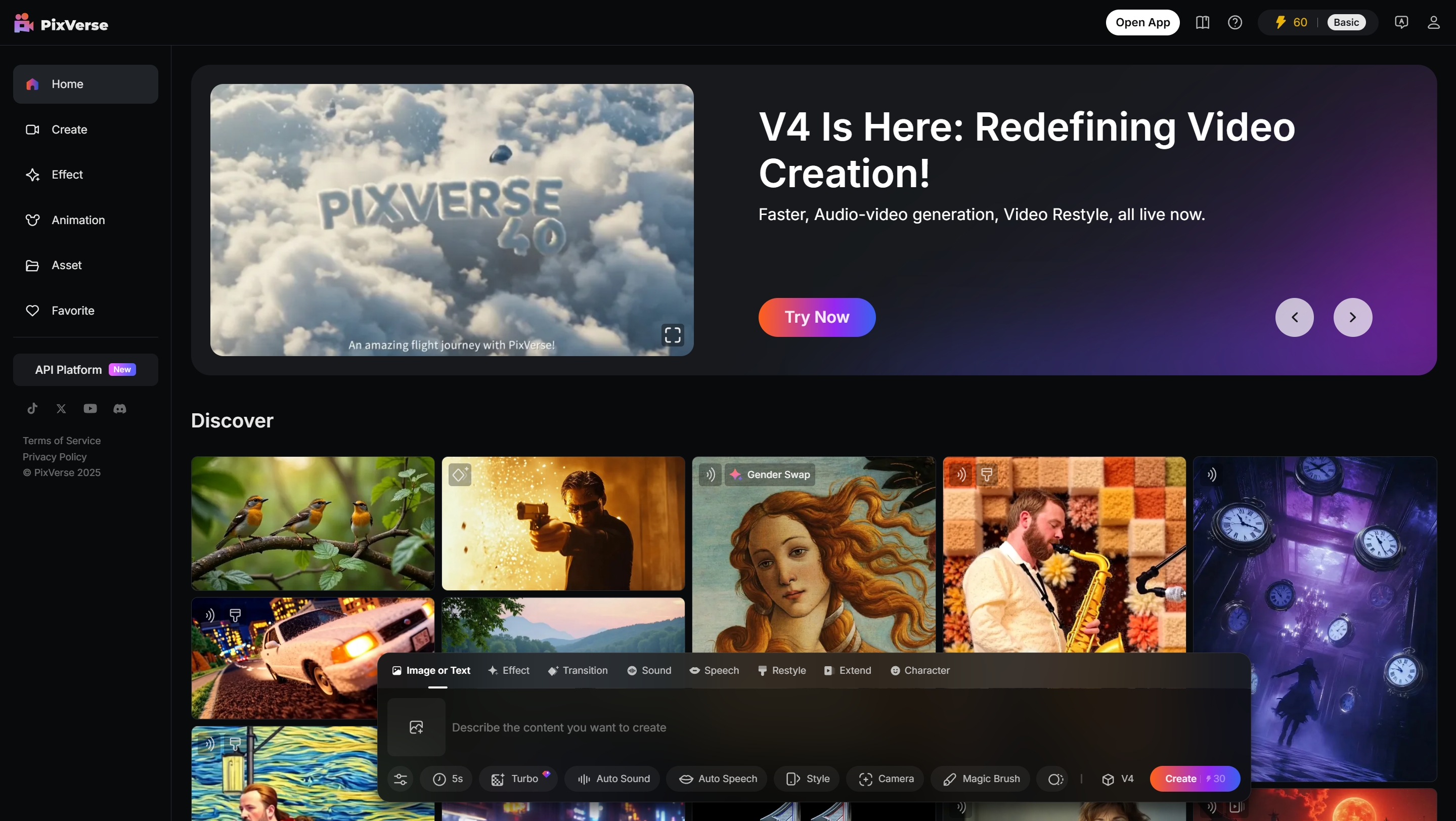

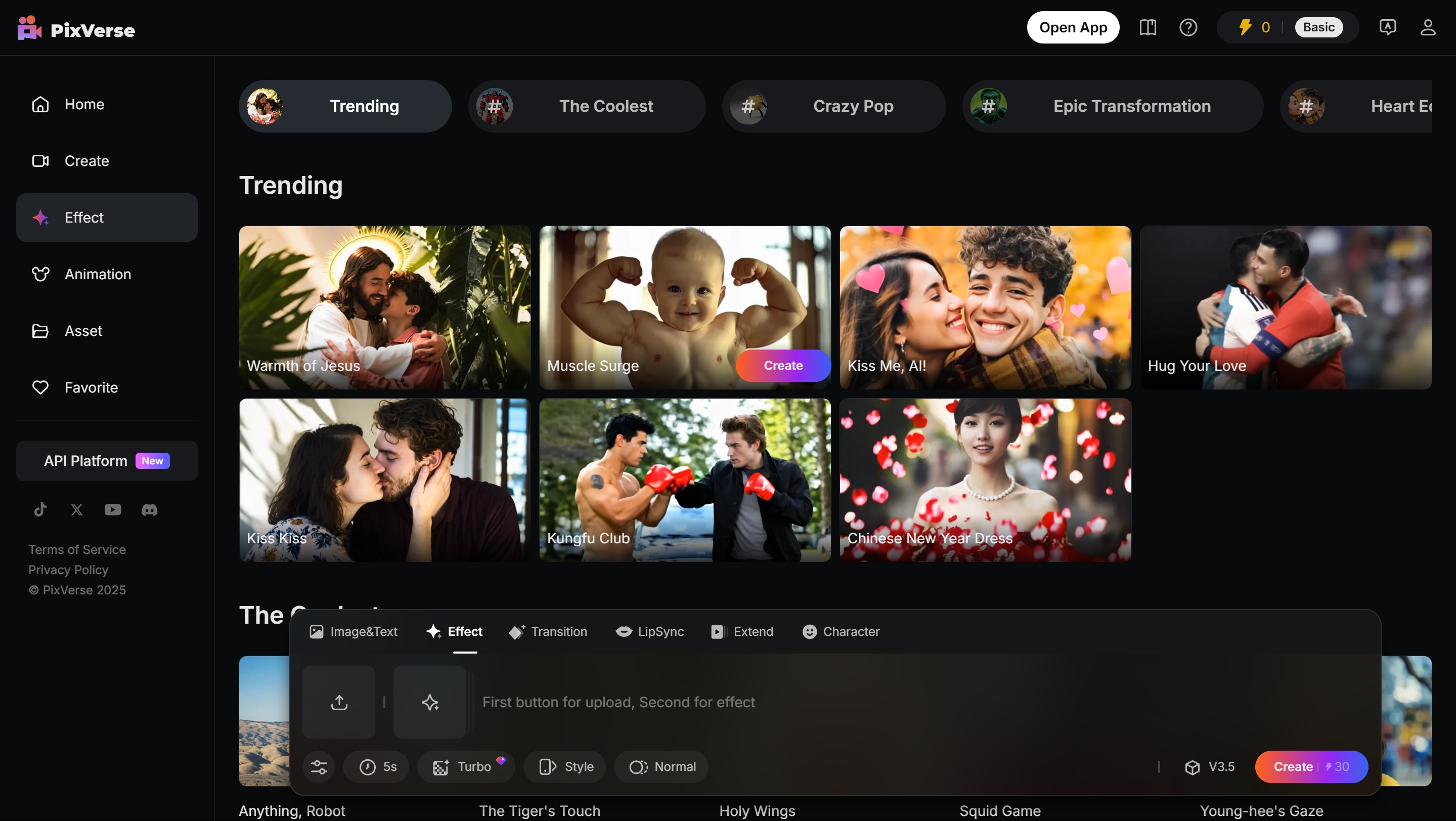

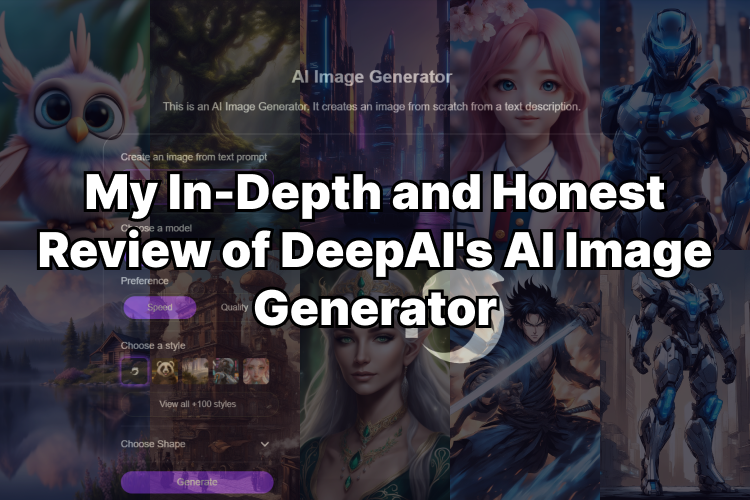
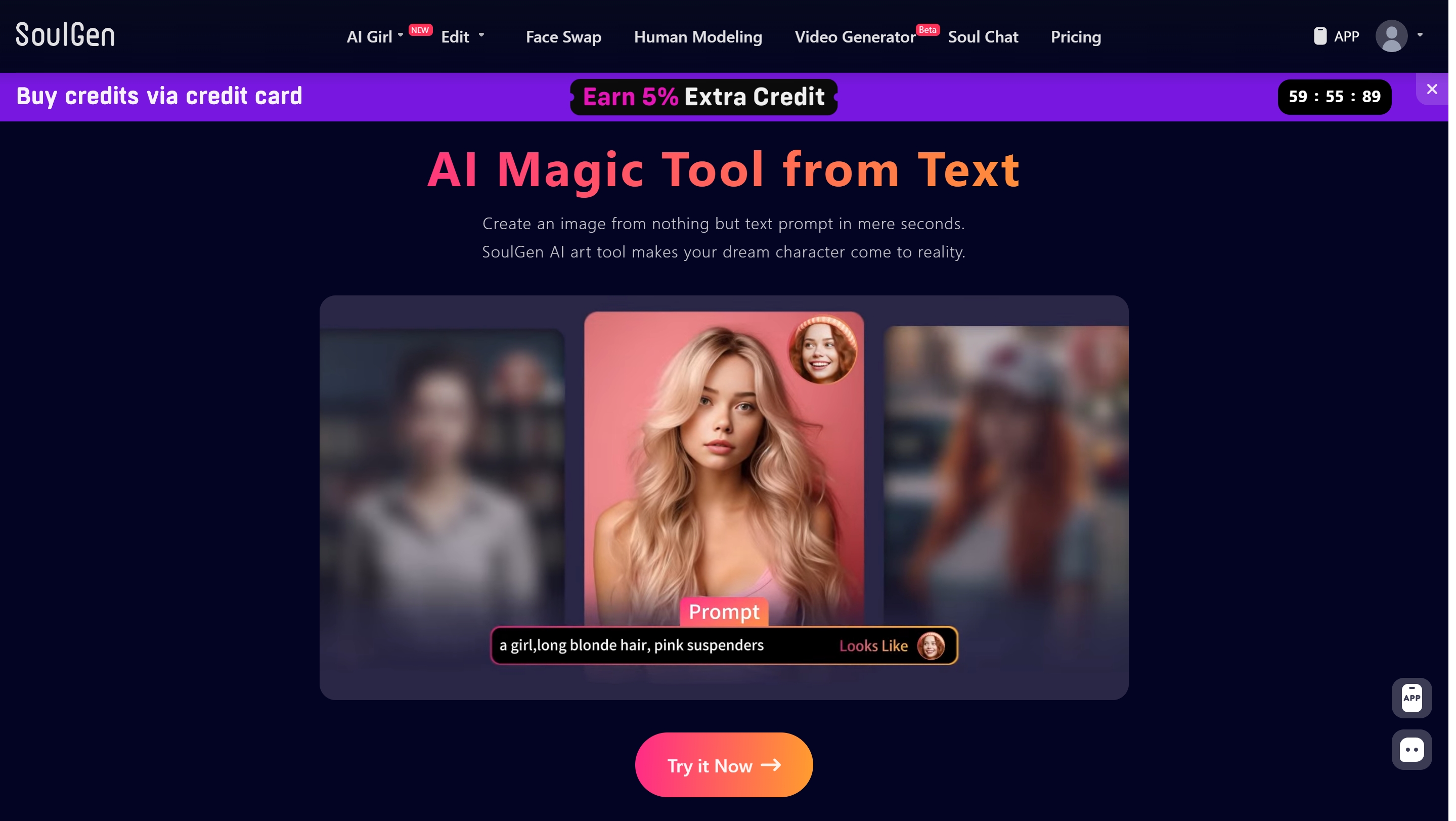

Leave a Reply